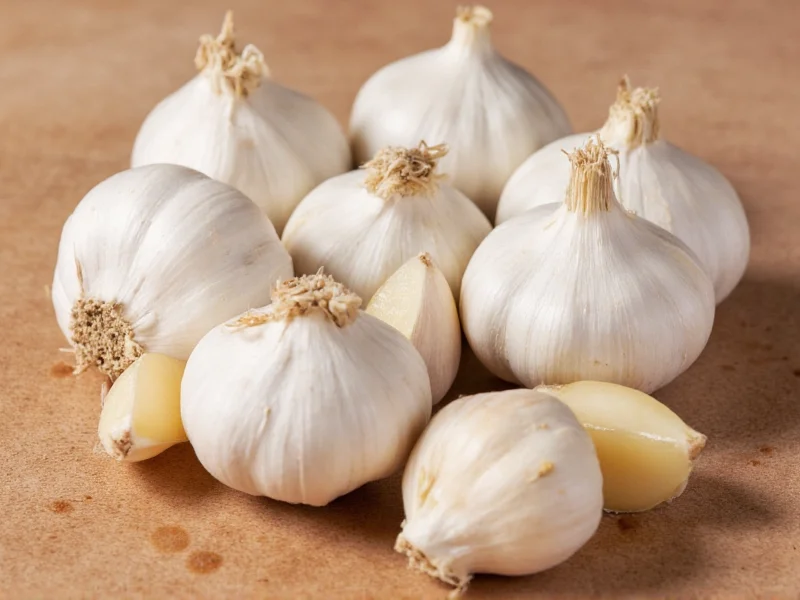When you're in the middle of cooking and realize you're out of garlic, or need an alternative due to dietary restrictions, knowing effective garlic substitutes becomes essential. Garlic's unique sulfur compounds create complex flavors that transform during cooking, making direct substitution challenging. This guide provides science-backed alternatives that maintain your dish's integrity while accommodating various dietary needs and flavor preferences.
Understanding Garlic's Flavor Chemistry
Garlic's distinctive taste comes from allicin, a compound formed when raw garlic is cut or crushed. This reaction creates that characteristic pungent aroma and flavor. When cooked, these compounds transform, producing different flavor notes. Understanding this chemistry helps select appropriate substitutes:
- Raw garlic: Sharp, pungent, with spicy notes
- Sautéed garlic: Mellow, nutty, sweet undertones
- Roasted garlic: Deep, caramelized, almost buttery flavor
Effective substitutes must address these different flavor profiles depending on your cooking method. The best garlic substitute for Italian cooking differs from what works in Asian stir-fries or Middle Eastern dishes due to cultural flavor pairings and cooking techniques.
Top Garlic Substitutes by Category
Onion Family Alternatives
Members of the allium family share similar sulfur compounds with garlic, making them logical substitutes:
- Shallots: Milder than garlic with subtle sweetness. Use 1 shallot for 2 garlic cloves in dressings and sauces.
- Chives: Delicate onion flavor works well as garnish. Use 1 tablespoon chopped chives per clove of garlic in finishing dishes.
- Leeks: Sweet, mild flavor ideal for soups and stews. Substitute 2 tablespoons leek (white part) for 1 garlic clove.
Herb-Based Substitutes
When you need garlic flavor without the allium family:
- Basil: Surprisingly effective in tomato-based dishes. Use 1 teaspoon dried basil per garlic clove.
- Oregano: Works well in Mediterranean recipes. Substitute 1/2 teaspoon dried oregano for 1 clove.
- Thyme: Earthy notes complement garlic in roasted dishes. Use 1/2 teaspoon dried thyme per clove.
Specialty Garlic Alternatives
For specific dietary needs or authentic ethnic cooking:
- Asafoetida (hing): Essential for authentic Indian cuisine, especially in lentil dishes. Use a pinch (1/16 teaspoon) for 2 cloves of garlic.
- Garlic-infused oil: Perfect for low-FODMAP diets since fructans remain in the garlic. Use 1 teaspoon oil per clove.
- Black garlic: Fermented alternative with umami depth. Mash 1 clove black garlic for 2 regular cloves in sauces.
| Substitute | Best Used In | Ratio | Special Considerations |
|---|---|---|---|
| Garlic powder | Dry rubs, sauces, dressings | 1/4 tsp = 1 clove | Less intense than fresh; add early in cooking |
| Onion powder | Meat dishes, soups | 1/2 tsp = 1 clove | Sweeter profile; works for garlic allergy |
| Asafoetida (hing) | Indian cuisine, lentils | Pinch = 2 cloves | Always cook in oil first; strong raw flavor |
| Garlic salt | Seasoning blends | 1/4 tsp = 1 clove | Reduce additional salt by 1/2 tsp per tsp used |
| Chives | Finishing dishes, potatoes | 1 tbsp = 1 clove | Add at end of cooking; mild flavor |
| Garlic-infused oil | Low-FODMAP dishes | 1 tsp = 1 clove | Safe for IBS; garlic solids discarded |
Substituting in Specific Cuisines
Italian Cooking Substitutes
Traditional Italian dishes rely heavily on garlic's flavor profile. For authentic results:
- Pasta sauces: Use 1 teaspoon onion powder plus 1/2 teaspoon oregano per clove of garlic
- Garlic bread: Brush with olive oil infused with dried basil and a pinch of asafoetida
- Pesto: Replace garlic with 1 tablespoon toasted pine nuts for similar umami depth
Asian Cuisine Alternatives
Asian cooking often uses garlic in high-heat methods where flavor development differs:
- Stir-fries: Substitute 1 teaspoon minced ginger for 1 clove garlic (adds similar pungency)
- Curries: Use 1/2 teaspoon ground coriander plus a pinch of asafoetida
- Dipping sauces: Replace garlic with 1/2 teaspoon rice vinegar for brightness
Dietary-Specific Garlic Alternatives
For Garlic Allergies
True garlic allergies require careful substitution. Safe alternatives include:
- Celery salt (1/4 teaspoon per clove) - provides similar savory notes
- Caraway seeds (1/4 teaspoon crushed per clove) - works well in meat dishes
- Smoked paprika (1/8 teaspoon per clove) - adds depth without alliums
Low-FODMAP Options
For those with IBS or following a low-FODMAP diet:
- Garlic-infused oil (commercial or homemade) - fructans remain in garlic solids
- Chives (green parts only) - low in problematic carbohydrates
- Onion tops (green parts) - much lower FODMAP content than bulb
Avoiding Common Substitution Mistakes
Many home cooks make these errors when replacing garlic:
- Using too much substitute: Most alternatives are more concentrated than fresh garlic
- Adding at wrong cooking stage: Asafoetida must be cooked in oil first; herbs should be added later
- Ignoring flavor transformation: Raw substitutes behave differently than when cooked
- Mixing incompatible substitutes: Asafoetida clashes with dairy; avoid in creamy sauces
For best results, always add substitutes gradually and taste as you cook. The ideal garlic substitute for soup differs from what works in salad dressings due to temperature and emulsification factors. Understanding these nuances ensures your dishes maintain balance even without garlic.











 浙公网安备
33010002000092号
浙公网安备
33010002000092号 浙B2-20120091-4
浙B2-20120091-4